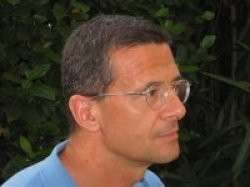A new approach to the measure of cultural distances<\br> A new IUSSP online magazine : N-IUSSP
Presented by Gustavo De Santis (DiSIA Dip. di Statistica, Informatica, Applicazioni "G. Parenti", University of Florence) ; Discussant : France Guérin-Pace (Ined)
A new IUSSP online magazine : N-IUSSP
Gustavo De Santis will present a new IUSSP online magazine for the dissemination of scientific findings in population research : N-IUSSP
Gustavo De Santis and Massimo Mucciardi (Un. de Messina) : A new approach to the measure of cultural distances
Présentation en Français
This presentation combines two distinct strands of research. One is the (recently proposed) DBS-EM method, or Distance Between Strata estimated with the EM (Expectation Maximization) algorithm, typically, albeit not necessarily, on cultural data. The method permits researchers to measure how close to, or far from, each other any two subsets of observations (or strata) are, relative to the average distance observed within the whole sample. When the strata are formed on the basis of supposedly meaningful variables (e.g., age or region of residence) the method tells whether these variables actually characterize, and thereby differentiate, observations. With a proper, repeated set of observations, the stratification variables can be age, period and cohort, i.e., an APC model. These models have long attracted scholars, and frustrated them, because of the intrinsic collinearity problem (C=P-A). We show that, within the limits imposed by the DBS-EM method, the collinearity problem of the APC models disappears, and, with proper data, the relative importance of the three dimensions (age, period and cohort) can be easily assessed - an absolute novelty in this field. In our application on Italian data over the years 1993-2013, age and cohort strongly shape cultural attitudes, while cohort and period have some impact on political orientations.
Gustavo De Santis

Gustavo De Santis is Professor of Demography at the Dept. of Statistics, University of Firenze. He is a Member of the most important Italian and international demographic associations.- Since Nov. 2015 - Chief editor of N-IUSSP (www.niussp.org)- 2015-2017: Vice President of AISP (Italian Association for the Study of population).- Since January 2014: Italian Representative at the UN Commission on Population and Development (New York).- Since April 2010: President of the Scientific Council of the INED (Paris), and since 2012, Member of the Scientific Committee of IPOPs.- Since February 2010: Co-director of the Florence School on Euro-Mediterranean Migration and Development, organized by the University of Florence and the Robert Schuman Centre for Advanced Studies at the European University Institute (Florence).- Since 2007 - Organizer (currently: President) of the website "Neodemos" (www.neodemos.it).
He has recently published:- with SALINARI Giambattista (2015) “Earlier and more rapid ageing: does nutrition contribute?”, International Journal of Population Studies, vol 1, pp. 42-59 (DOI http://dx.doi.org/10.18063/IJPS.2015.01.005) (http://ijps.whioce.com/index.php/ijps/article/view/01005)- with MALTAGLIATI Mauro and SALVINI Silvana (2015) “A measure of the cultural distance between countries”, Social Indicators Research, online first, pp. 23 (DOI 10.1007/s11205-015-0932-7) (http://link.springer.com/article/10.1007/s11205-015-0932-7)- with MUCCIARDI Massimo (2015) “Cultural vs. objective distances: the DBS-EM approach”, Social Indicators Research, online first, pp. 16 (DOI 10.1007/s11205-015-1213-1) (http://link.springer.com/article/10.1007/s11205-015-1213-1)- with SALINARI Giambattista (2015) “On the Beginning of Mortality Acceleration”, Demography, Volume 52 (1), Page 39-60. DOI: 10.1007/s13524-014-0363-0.
